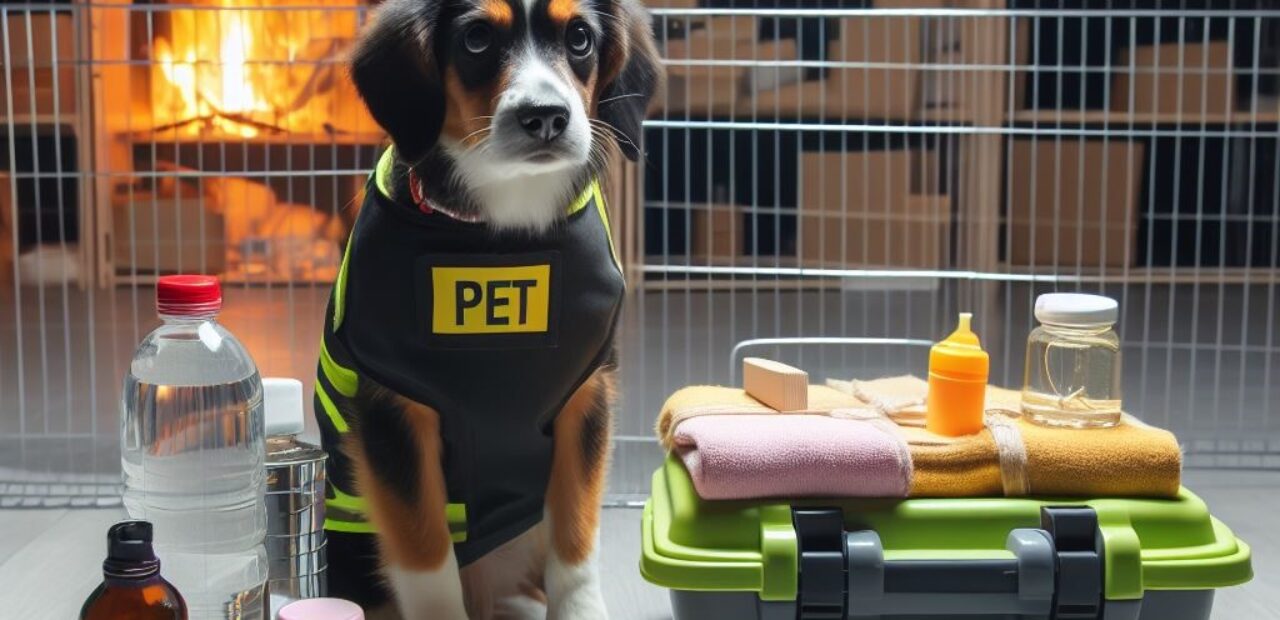Pet Safety Measures: Ensuring Pet Well-Being Post-Disaster
Ensuring pet safety post-disaster is paramount. Consider microchipping for permanent identification and quick reunions. Maintain updated records with recent photos for lost pet posters. Prepare a three-day supply of food, water, and medications in an emergency kit. Include familiar items for comfort. Plan pet-friendly evacuation routes and know shelter options in advance. Your pets rely on you for their well-being during crises.
Key Takeaways
- Microchip pets for permanent identification and secure contact details.
- Prepare a three-day supply of food, water, and medications in an emergency kit.
- Plan pet-friendly evacuation routes and identify shelters in advance.
- Include familiar items for pet comfort during emergencies.
- Act promptly using updated records and photos to reunite lost pets.
Pet Identification and Records
Ensuring pet safety post-disaster begins with comprehensive pet identification and record-keeping measures. Microchipping your pets offers a permanent form of identification that greatly increases the chances of being reunited if separated. The benefits of microchips include secure storage of your contact details, making it easier for shelters or veterinarians to contact you.
Additionally, updating pet photos is crucial for creating accurate lost pet posters and social media alerts. In emergencies, having recent images of your pets can expedite the search process. Regularly updating these photos ensures they reflect your pets’ current appearance, aiding in their swift identification and safe return.
Emergency Supplies for Pets
In preparation for any potential disaster, it is essential to gather emergency supplies for your pets to ensure their safety and well-being. When assembling these supplies, consider the following:
- Pet food storage: Stockpile at least a three-day supply of your pet’s food in airtight containers to maintain freshness.
- Medication preparation: Ensure you have a supply of any necessary medications your pet may need during an emergency. Keep medications in their original containers for proper identification.
- Water reserves: Store enough water for your pets to last at least three days, accounting for one gallon per day per pet.
- Comfort items: Include familiar blankets, toys, or bedding in your emergency kit to provide comfort and reduce stress for your pets.
Evacuation Planning for Pets
During times of potential disaster, it is crucial to meticulously plan for the safe evacuation of your pets to ensure their well-being and security.
When preparing for evacuation, consider pet transport options and identify pet-friendly shelters in advance. Plan evacuation routes that accommodate your pets and arrange transportation accordingly.
It is essential to have a list of pet-friendly hotels as part of your evacuation plan. Additionally, think about neighbors or friends who could assist with pet care if needed.
Frequently Asked Questions
How Can I Help My Pet Cope With the Emotional Stress of a Disaster Aftermath?
To help your pet cope with emotional stress post-disaster, consider pet therapy and emotional support. Use coping strategies like maintaining routines, providing comfort items, and engaging in calming activities. Monitor behavior for signs of stress and seek veterinary advice if needed.
Are There Any Specific Training Techniques to Prepare My Pet for Emergency Situations?
Incorporating emergency preparedness and behavior training is essential to prepare pets for emergency situations. Utilize desensitization techniques, reward positive responses, and practice evacuation drills to acclimate pets to potential stressors, ensuring their safety and well-being.
What Steps Can I Take to Ensure My Pet’s Mental Well-Being During and After a Disaster?
To ensure your pet’s mental well-being during and after a disaster, focus on mental stimulation with comforting routines, provide socialization support, and utilize relaxation techniques. Create a safe environment, offer familiar comforts, and maintain a calm presence for reassurance.
How Can I Help My Pet Overcome Any Fears or Anxieties Related to Disasters?
In helping pets overcome fears and anxieties related to disasters, implementing fear desensitization and anxiety management techniques is crucial. Confidence building and calming techniques can also aid in soothing pets, fostering resilience and emotional well-being.
Is There a Recommended Timeline for Reintroducing My Pet to Their Normal Routine After a Disaster?
After a disaster, reintroducing your pet to their routine should be gradual. Allow for a recovery process as your pet adjusts. Monitor behavior for signs of stress and seek veterinary care if needed. Create a safe and comforting environment for your pet.
















